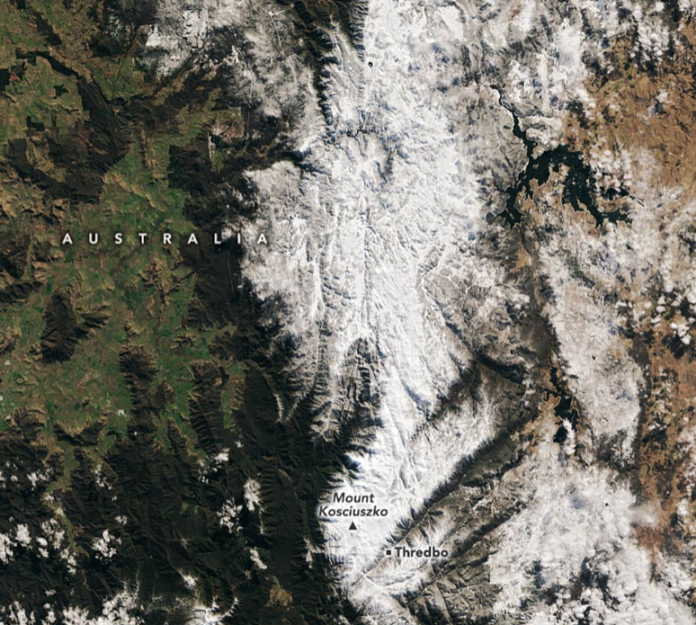Satellite image of Australia’s Snowy Mountains captured on July 28, 2024, by the Operational Land Imager on Landsat 8.
This report is from the NASA Earth Observatory:
Fresh powder fell on Australia’s tallest peaks and popular ski resorts.
In July 2024, southeastern Australia’s Snowy Mountains experienced a late but significant snowfall, enhancing conditions for skiing. This event, captured by Landsat 8’s OLI, marked a shift from the season’s slow start, with substantial snow accumulating after July 19.
Winter’s Grand Arrival in Southeastern Australia
Winter made a late, but bold, entrance to the mountains in southeastern Australia. Much to the delight of skiers Down Under, a period of seasonal weather in July 2024 brought significant accumulations to the Snowy Mountains in New South Wales.
The OLI (Operational Land Imager) on Landsat 8 acquired this wintry image of Australia’s Snowy Mountains on July 28. Part of the Australian Alps, the range is home to the country’s tallest peaks, including Mount Kosciuszko at 2,228 meters (7,310 feet), as well as several popular ski resorts. Peak snow season in this region usually lasts from June to August, although snow commonly falls at higher elevations in May and can linger through October.
A Slow Start to the Ski Season
Winter got off to a slow start in the Snowy Mountains in 2024, however. Slopes were mostly bare for the traditional opening of the ski season in early June, according to news reports. Meteorologists attributed the lack of snow to blocking highs, or strong high pressure systems, that persisted over the Great Australian Bight.
Weather patterns changed on July 19, and heavy snow reached the mountains. On July 21, the Thredbo ski resort reported that 59 centimeters (23 inches) of snow had fallen during the storm. Smaller accumulations came in subsequent days. Starting July 28, a strong cold front delivered “unusually low” temperatures to parts of New South Wales and yet more snow to the mountains. According to news reports, some of Australia’s extreme winter weather in 2024 was influenced by a rare sudden stratospheric warming event over the Antarctic.


